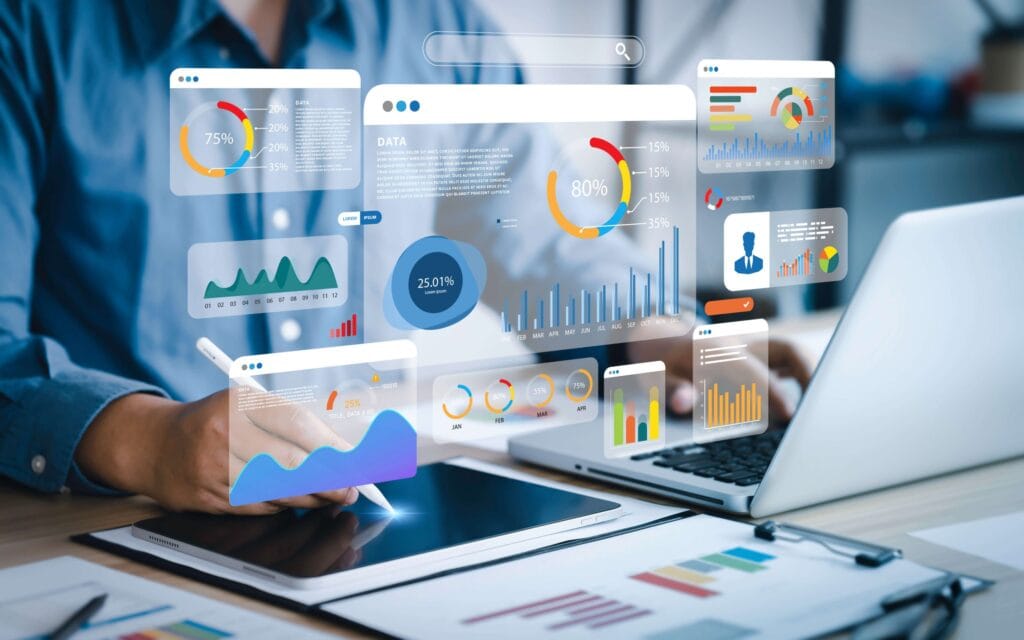Nowadays, mobile applications play an important role for businesses to expand their digital presence or increase user experience. Digital agencies also meet the demands in this field by offering mobile application development services to their customers. However, some important steps must be followed in order to successfully complete a mobile application project.
Steps Followed by Digital Agencies in the Mobile Application Development Process

Purpose of mobile applicationTo determine factors such as target audience and functions. Agencies determine project goals by working with the customer and understanding the needs. The agency develops a concept based on a needs analysis. At this stage, elements such as the design of the application, user interface and features are determined. Ideas become concrete by creating prototypes. mobile app It is important to have a user-friendly design. Agencycreates the user interface and visual design of the application. It is aimed to present a design that suits the brand identity. Coding of the application is carried out at this stage. Appropriate programming language and tools are selected according to the platform used for mobile application development (iOS, Android, etc.). Throughout the development process, frequent testing is done and bugs are fixed.
The mobile application can be downloaded to the relevant application stores (App Store, Google Play etc.) sends. The agency guides its client through the application publication and distribution process. Once the mobile app is published, the agency constantly monitors its performance and manages updates. Errors are corrected based on user feedback. Performance is improved by adding new features. For the application to be successful, it is important to implement an effective marketing and promotion strategy.
Mobile Application Development Steps
- Opinion and Analysis
The first step is the development and detailed analysis of a mobile application idea. It is important to determine the target audience, examine similar applications and conduct market research.
- Determination of Needs
Following the analysis process, the basic needs of the application are determined. At this stage, it is understood what kind of experience users want to have and what features the application should offer.
- Design
It is the user interface (UI) and user experience (UX) design phase. A user-friendly interface is designed. Design elements are created by planning the application flow and navigation.
- Development
During the development process, mobile application codes are written in accordance with the selected platforms (iOS, Android, etc.). At this stage, application functionality and its features are being developed. If necessary, integrations are made on the server side and database management is carried out.
- Testing and Bug Fixing
It includes the steps of testing the application, identifying and fixing errors. Both usability tests Both functionality tests are carried out. Feedback is received and the application is constantly improved.
- Distribution
The mobile application is uploaded to the target platforms (App Store, Google Play Store, etc.). Publishing processes determined by the platforms are followed and necessary information (screenshots, description, release notes) is provided.
- Marketing and Promotion
Strategies are being developed for marketing and promotion of the application. At this stage, social media, press releases, advertisements and other marketing methods is used.
- Continuous improvement
The application is constantly improved based on user feedback or analysis data. New features are added, performance and usability are increased.
Who is Involved in Mobile Application Processes?

The mobile application development process involves several people or teams working in different roles. Here are some important teams or roles involved in the mobile app process:
- Project Manager: The project manager is the person who manages and coordinates the mobile application development process. Ensures communication between the customer and other teams, manages the project timeline and resources, and ensures that goals are achieved.
- Strategists and Analysts: The strategy and analysis team develops appropriate strategies by analyzing the customer's needs and the market. Conducts user research, conducts competitive analysis and creates marketing strategies.
- Design Team: The design team is responsible for user experience and user interface design. Graphic designers create a user-friendly design and provide a visual design that aligns with the brand identity.
- Development Team: The development team is responsible for coding the mobile application. This team consists of frontend and backend developers. It implements the functionality of the application using programming languages and tools suitable for the desired platforms (iOS, Android, etc.).
- Testing Team: The testing team conducts tests to identify bugs and shortcomings of the application. It conducts different tests such as usability tests, performance tests, compatibility tests and security tests. In this way, it is ensured that the application works in a stable and user-friendly manner.
- Marketing and Business Development Team: The marketing and business development team deals with the promotion of the application, marketing strategies or user acquisition. It carries out marketing efforts to ensure that the application reaches the target audience, raises awareness among users and ensures the success of the application.
In the meantime: We offer a comprehensive resource for the latest technology trends, practical tips and best practices. Don't forget to follow Istcode and visit it from time to time!





